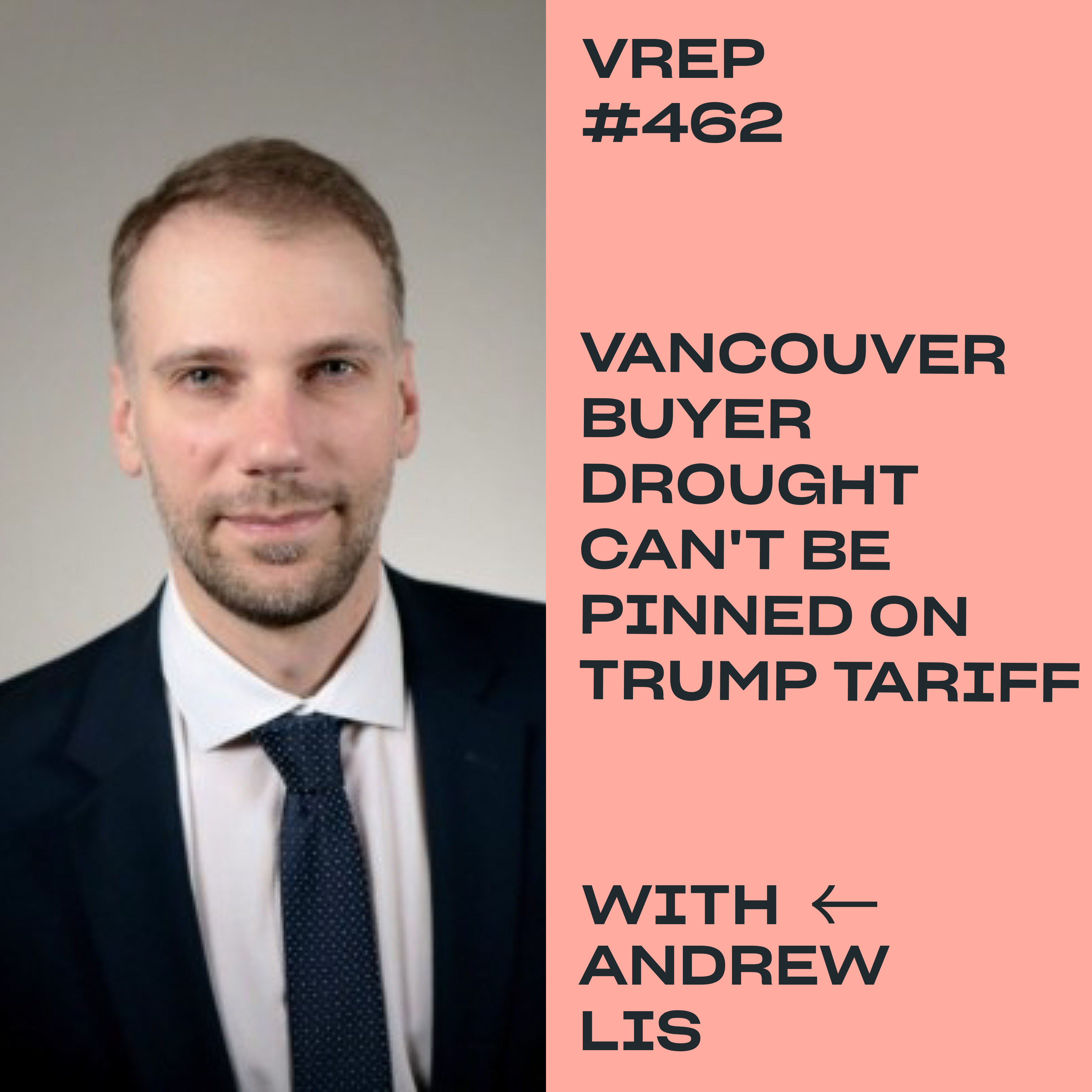Episode 244 – October 8, 2020
Listen On: Apple Podcasts | Spotify | Google Podcasts
We’re sick of post-covid terms like ‘new normal’, mostly because our current pandemic living no longer feels new or, for that matter, normal. So, is it surprising then that buyers seem to be making long term, major financial and lifestyle decisions based on the past six months alone? Maybe not.
Today, Adam & Matt discuss current buying trends that seem to be here to stay – for at least the foreseeable future. Then, Emily Hamilton, Director of the Urbanity Project at Mercatus Center at George Mason University, joins us to cover the pain points that accompany blanket rezoning and how to troubleshoot density issues in major metropolitan cities. Increasing density in cities? Now that’s a ‘new normal’ we can get used to! Zone it up!
Listen to Episode
Guest Information

Emily Hamilton
Emily Hamilton is the Senior Research Fellow and Director of the Urbanity Project at the Mercatus Center at George Mason University. Hamilton’s research on urban economics and land-use policy has been published in numerous academic articles and policy papers. Her articles and papers have appeared in the Washington Post, USA Today, and the Los Angeles Times.
Episode Summary
Emily Hamilton shares her insights, from ending single-family zoning to solving density issues. Here’s what you need to know about the issues in major metropolitan cities.
*disclaimer: the information contained below and in the companion audio podcast are intended solely as legal information for personal use and should not be considered legal advice*
Keep your finger on the pulse of Vancouver’s real estate market with our Live Wire email newsletter.
Tell us about yourself.
I am a housing economist at the Mercatus Center. I work on regulatory issues that stand in the way of more housing being built at lower costs. When people can’t live where they would like to, they’re not making the type of economic contributions they would be if they could afford housing where they want to live.
Why did you write your recent article, “Want More Housing? Ending Single-Family Zoning Won’t Do It?”
There’s been a big emphasis in the US on ending single-family zoning, which is something I stand behind. There’s no reason not to let people live in denser configurations if they would like to. But there’s so much focus on single-family zoning, that other regulations that are standing in the way of lower cost housing aren’t getting the attention they need.
For example, in Minneapolis where there was a reform on single-family zoning in 2019, there haven’t been other reforms to go along with that to allow more units to be built on a single lot. Most of the land that was previously zoned for single-family homes still has a height limit of no more than three stories. There are also floor area restraints and other regulations that make it more difficult to build triplexes, even though they are allowed. It’s been a year since triplexes have been permitted and they have only permitted three. Things may get better down the road, but so far it has been disappointing.
To be clear, there is a lot to be celebrated in Minneapolis. It’s still a radical change. But it’s a very narrow focus that obscures the other regulations that still make density harder to achieve.
Why would they focus on single-family zoning and overlook other regulatory restraints?
I think there are a few reasons. In the US, single-family zoning has a very racist history. It was a policy first implemented to keep neighbourhoods segregated. So we should absolutely get rid of policies that still have racist effects today.
In Minneapolis, this reform was sold by saying that it wouldn’t change the look of Minneapolis from the outside. But that’s not usually what we see. Usually we need a larger lot to accommodate more units, rather than chopping up an existing single family home into smaller units.
Are cities generally over-regulated? Is the solution to open things up and let builders build?
That’s my opinion, yes. I think cities are very much over-regulated.
It’s too difficult to get new housing proposals approved and the rules on the books don’t allow for enough housing to be built where people want to live.
When we look at cities in the US that are less regulated, like many in Texas, we see rapid population growth while the cities still remain relatively affordable.
How have Houston and other Texas cities gotten it right?
The large cities in Texas permit lots of multi-family projects. In 1999, Houston reduced its minimum lot size from 5000 square feet to 1400 square feet. So that essentially moved lots from single-family zoning to triplex zoning. That led to some cool townhouses in Houston, especially in the downtown area.
Houston doesn’t have “use zoning,” meaning that townhouses can not only replace single-family houses but can also be built in industrial areas. They don’t have residential, commercial or industrial zones for land. On the whole, the city doesn’t look much different from other newly developed, car-oriented cities. Land prices determine where different uses are located.
Houston reminds me of Calgary – a lot of sprawl, car culture, etc. Do the regulations, or lack of, in Houston lead to sprawl?
A lot of people prefer denser and more walkable neighbourhoods and people with those preferences are currently underserved. The price premium on more walkable neighbourhoods is high in the US. Land use regulations make it hard to build new walkable regions and they make it hard to add housing to regions that are already walkable.
I don’t think a more market driven outcome prevents walkability. Older cities, where the most walkable neighbourhoods are, were built without zoning and land use regulations. However, it’s not realistic to expect a place like Lower Manhattan to be built today. Houston has lots of government regulations that shape what the city looks like today, even if Houston doesn’t have land use regulations. For example, it has high parking requirements and extensive highway building. So that makes it harder to build walkable locations but also subsidizes people who want to live farther out.
Sign up for insider real estate news & tips from our podcasting team.
Is the trend of moving out of cities something you’re seeing? Do you think that is a short-lived trend or will it change buying habits?
I don’t know if this short-lived trend will be long lasting or not. Lots of high income people are leaving New York City to the Hamptons or other places where they can afford a house. Mountain towns in the US are also seeing lots of demand for housing. It’s likely that trends we were already seeing, such as more people working remotely and for themselves, will be accelerated by COVID. People who were averse to video calls and remote working have been forced to get more comfortable with those things. So it’s likely some people and some firms have now changed their stance on remote work permanently.
How big will that transition be? It’s unknown. I’m a big believer in cities. The innovation, the chance meetings of people, and face to face communication are key to many knowledge sector jobs. I don’t think that can be fully replicated online. But this situation is unprecedented and I wouldn’t want to bet on any certain outcome.
But I do have a bet out! I bet that the median rent in New York City will be the same or higher in three years than it is today. Vacancy rates have increased in New York City like they have in Toronto and Vancouver. High end newer buildings are seeing the largest decline and there’s less movement in lower cost buildings. But we’ll see!
Canada and the US share the fact that major cities, especially on the coast, have suffered from increasing housing costs. Are you optimistic that we will get this right in the next 10-15 years?
I’m much more optimistic now than I was several years ago. When I first started working on urban policy issues, it seemed clear to me that homeowners have so much power at the local level, relative to renters. But based on the reforms we’ve seen at state and local levels, I’ve become much more optimistic. Policy makers who recognize that housing affordability is a burden for their constituents and are willing to take steps that are not universally liked in order to provide that housing are encouraging.
California has been a real leader on that front, likely because their affordability problems are the most severe. There’s been a lot of energy on the state level across the US. They’re stepping in and making it easier to build those “missing middle” and gentle density solutions.
What is at risk if we don’t get this right?
In California there are lots of small municipalities that are very wealthy, and they may be fine with the status quo. But there’s extreme disparity if you go one jurisdiction over. Homelessness rates are reaching new heights and so many renters and owners are burdened by how much they have to spend to remain housed each month.
California has already lost some major employers to lower cost states. They’ve relocated so their employees can have a better quality of life and afford their housing. It’s possible if California isn’t able to fix their problem, it could cause serious issues for governments down the road. Things like public employee pension systems require certain levels of population and population growth.
Be the first to know about new listings, price reductions, and sold listings. Sign up for free with Private Client Services - no obligation, no cost.
Episode Host

Adam Scalena
Adam is a full-service realtor, specializing in Vancouver’s best areas. His systematic approach to real estate and dedication to his clients has consistently placed him within the top 10% of realtors operating within Greater Vancouver.

Matt Scalena
Matt is real estate obsessed and considers himself a lifelong student of the Vancouver real estate market. As a co-manager of the Scalena Real Estate team, Matt prides himself on expertly advising buyers and sellers on all aspects of the fast-paced, dynamic Vancouver real estate market. He is present at every stage of the process, from that first phone call or email right through to when keys are exchanged between sellers and buyers.
Resources From Episode
- September 2020 REBGV Statistics Package
- Seller’s Club – Sign up for our Live Wire newsletter and hit reply once you’re on the list to get access to our exclusive Seller’s Club.
Sponsors
VREP2020 for realtors who want to join and get a special sign up bonus.





